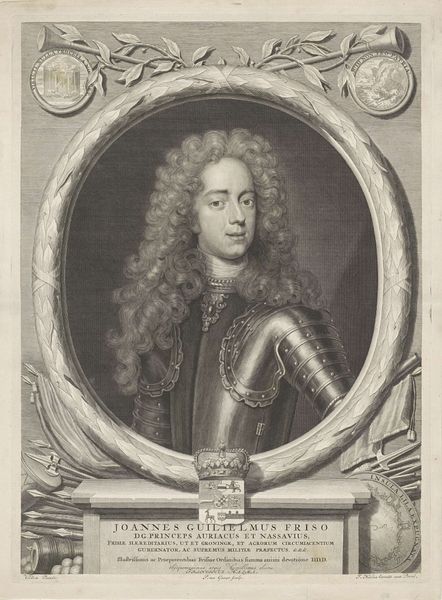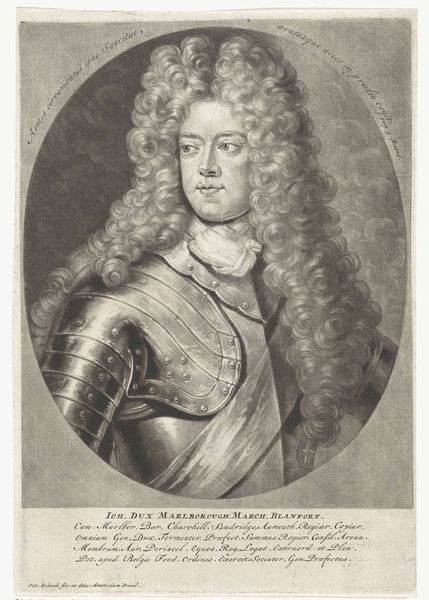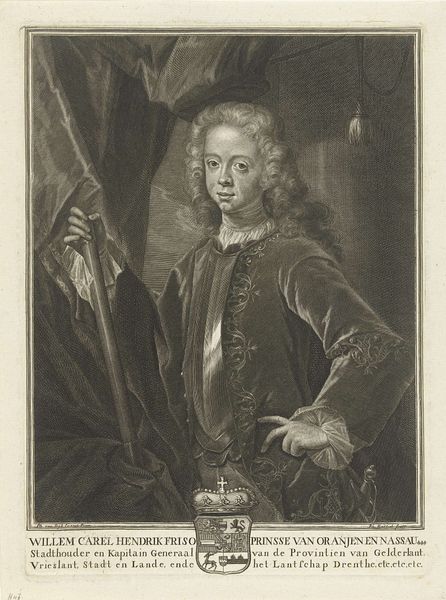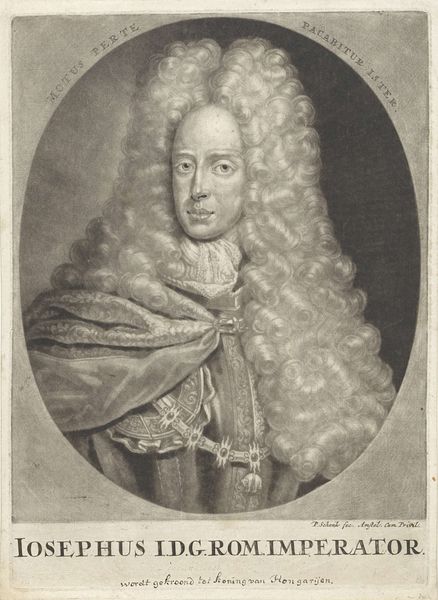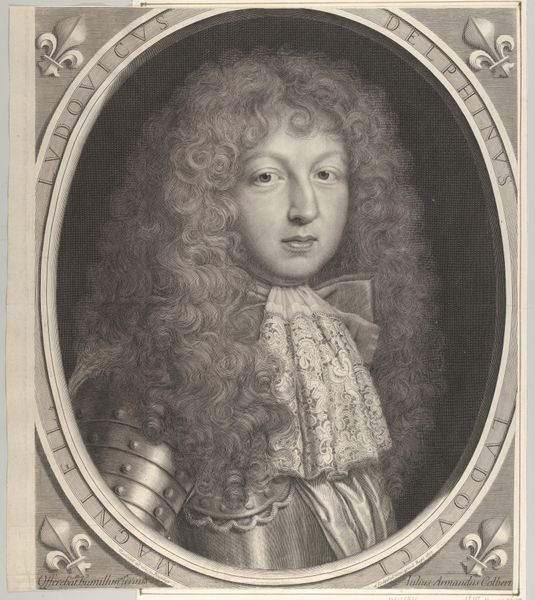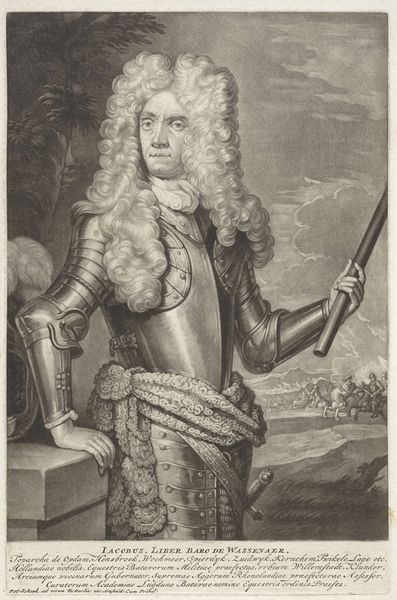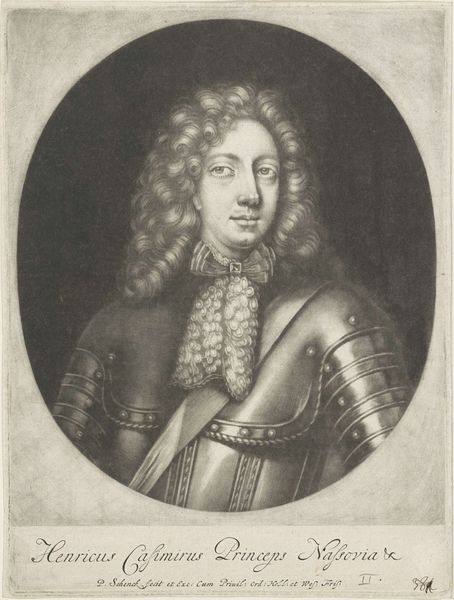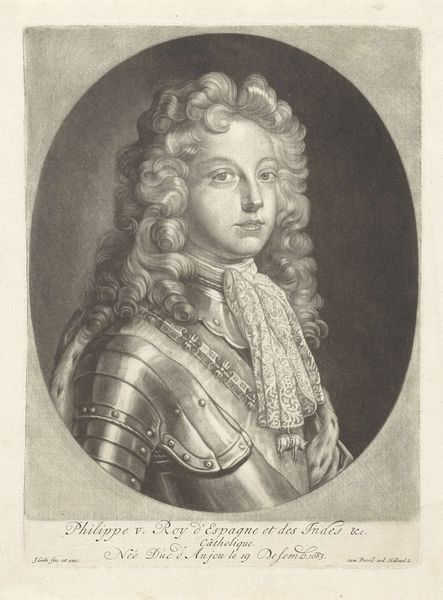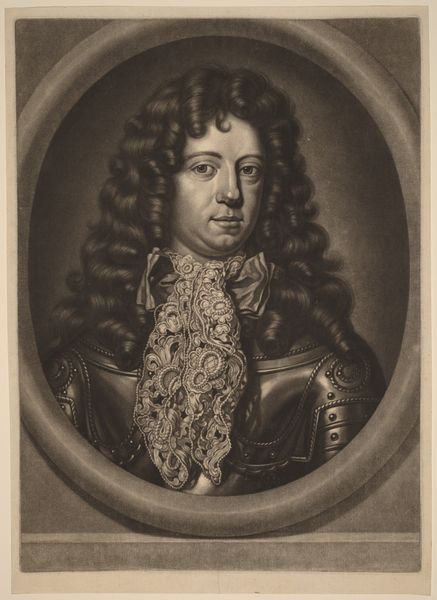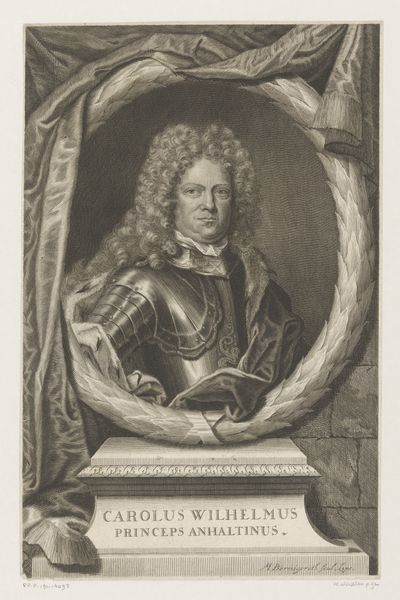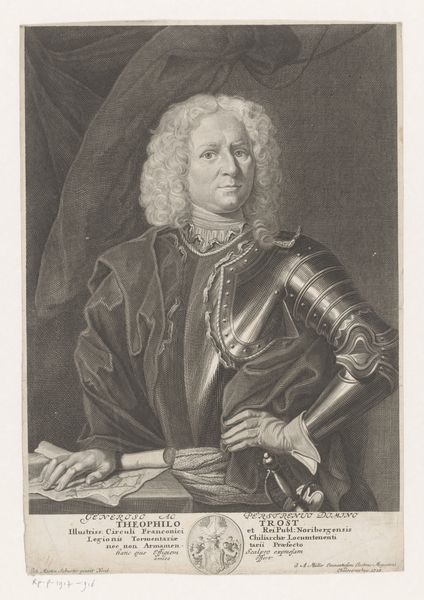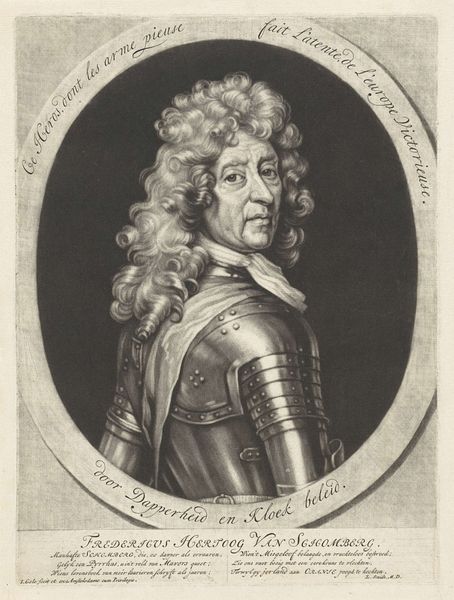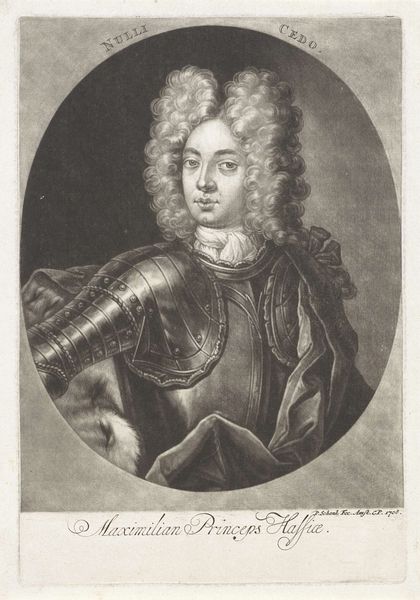
print, engraving
#
portrait
#
character portrait
#
baroque
# print
#
figuration
#
line
#
history-painting
#
engraving
Dimensions: 409 mm (height) x 288 mm (width) (bladmaal)
Curator: Here we have a print by Albert Haelwegh dating from 1655, titled "Christian V". It resides here at the SMK, the Statens Museum for Kunst. Editor: My initial impression is one of somewhat unsettling regality. The young man’s eyes are very wide and it has a certain formal rigidity to it, although the lines are elegant, clean. Curator: This engraving reflects the broader context of royal portraiture during the Baroque period, particularly the construction of identity through material culture and social position. The work's symbolism—armor and a formal wig—presents the young royal as an embodiment of power, ordained by legacy. Editor: Precisely. And it’s crucial to note the materiality here. It's an engraving, a painstaking, laborious process. Think of the skilled labor required to produce the plates for dissemination. Each line is carved with intention. Curator: The figure of Christian V also fits neatly within the history-painting and figuration theme we often find in portraits. I'm curious, what does the print medium itself, enable, and constrain in the visual representation of power? Editor: An engraving allowed for multiples; these portraits were instruments of soft power. We see evidence here of artistic production intersecting with dynastic aims; these pieces weren't merely aesthetic. And there’s a consumption aspect, too. Curator: Looking at the relationship between this specific portrayal and Christian’s later actions offers a compelling intersectional lens. Is it mere happenstance that he ended up trying to centralize authority later, or was he shaped, pressured, even pushed to embody that strength. Editor: Right, by looking closer at this print we can almost reverse engineer these pieces, deconstructing the labor that's visible—but more significantly the apparatus that might not be. Curator: It prompts a reflection, doesn't it? About identity and how visual culture actively produces those identities. Editor: Definitely, understanding its genesis makes me consider what even appears in an aesthetic vacuum really isn't.
Comments
No comments
Be the first to comment and join the conversation on the ultimate creative platform.
